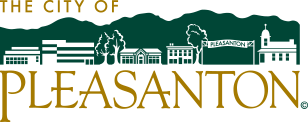- Pleasanton Water
- About Our Water
- Water Quality & Safety
- Investing in the Future
- Sewer Service & Programs
- Customer Service & Utility Billing
- Water Conservation Programs
- Water Rates
- Sewer Rates
- Recycled Water Program
- Near-Term Water Improvement Projects
- Joint Groundwater Wells Project
- Cross-Connection Control & Backflow Prevention Program
- Clean Water Program
Sewer Service & Programs
The City of Pleasanton manages and maintains the community’s wastewater (sewer) collection system, which serves around 21,000 residential, multi-family, commercial, industrial, and institutional customers. This underground network is essential for safely transporting wastewater, protecting the environment, and safeguarding public health.
Whenever you flush a toilet, drain a bathtub, or run your dishwasher, Pleasanton’s system is ready to safely collect and transport that wastewater to regional treatment facilities. Most of the City’s wastewater is sent to Dublin San Ramon Services District’s Regional Wastewater Treatment Facility, while all wastewater from the Ruby Hill area goes to the City of Livermore’s Water Reclamation Plant. At these facilities, the water undergoes thorough treatment before being discharged into local waterways or reused as recycled water.
Sewer System by the Numbers
Connections
Staff
Planning for the Future & Safeguarding Public Health
Pleasanton’s sewer system is considered critical infrastructure, essential to protecting the health and safety of our community. The City regularly monitors, repairs, and upgrades the system to ensure safe, reliable service while minimizing spill risks.
Because of its vital role in public health and environmental safety, sewer systems are highly regulated. The City must adhere to strict state and federal standards and is dedicated to meeting these through responsible planning and investment. In line with this commitment, the City updated its Sewer System Management Plan (SSMP) in 2025. This state-mandated plan is revised every six years and audited every three years.
The SSMP aims to properly manage, operate, and maintain all parts of the sewer system, reduce and prevent spills, and contain and mitigate any spills that occur. Ultimately, it provides a roadmap for the City to reduce risks, extend the lifespan of its infrastructure, and safeguard the community for years to come.
What the SSMP Does for Pleasanton:
- Maintains Reliability – Ensures the sewer system is properly managed, operated, and maintained for optimal performance.
- Prevents Spills – Reduces the risk of sewer overflows that could impact homes, businesses, and local waterways.
- Protects Public Health – Outlines rapid response and mitigation steps in the event of a spill.
- Builds Resiliency – Prepares sewer infrastructure for climate change impacts, helping protect water quality.
Protecting Our Sewer System: Sewer Pipe Blockage Control Program
Each of our customers plays an important role in protecting our local sewer system. The City’s Sewer Pipe Blockage Control Program aims to prevent and reduce pipe blockages caused by fats, oils, grease, rags, and debris that customers may introduce into the sewer system.
Fats, oils, and grease (FOG) are byproducts of cooking that come from items like meat, dairy, sauces, and oils. When washed down sinks or drains, FOG can cool, harden, and stick to the inside of sewer pipes. Over time, this buildup restricts flow and can lead to blockages in the sewer system. These blockages may result in Sanitary Sewer Overflows (SSOs), which are serious public health and environmental concerns.
Spill Emergency Response Plan
In the event of a sewage spill, the City follows a state-mandated Spill Emergency Response Plan (SERP). This plan provides clear guidelines and step-by-step procedures to ensure a prompt, orderly, and effective response to spills. It focuses on:
- Containing and reducing spill volumes
- Protecting public health and the environment
- Collecting information to prevent future spills
The SERP offers guidelines for City personnel to follow when responding to, cleaning up, reporting, and properly documenting spills that may occur from City-owned sewer mains and laterals. The SERP also includes procedures for responding to sewer backups into homes or buildings. A backup refers to property damage caused by contact with untreated or partially treated sewage.
